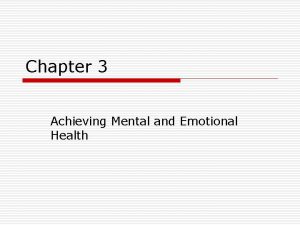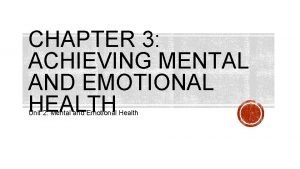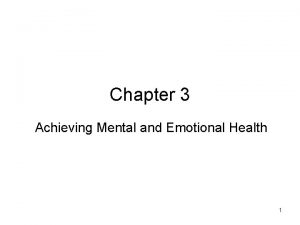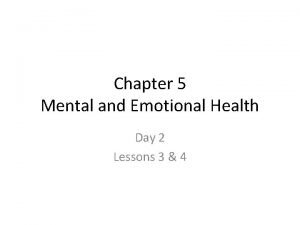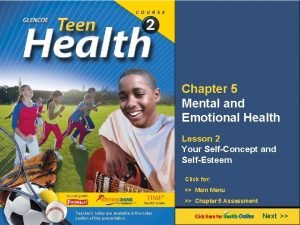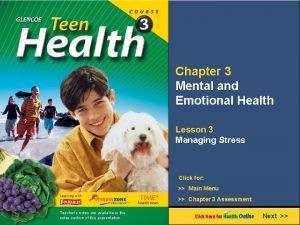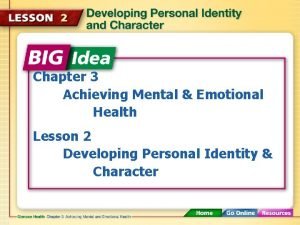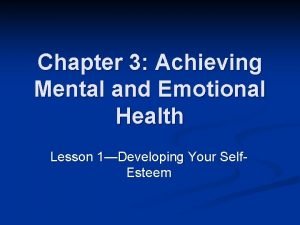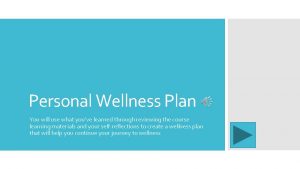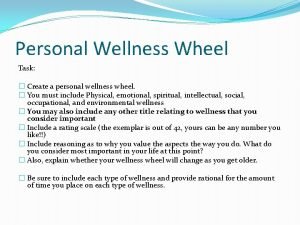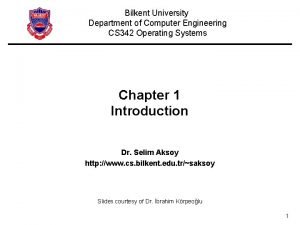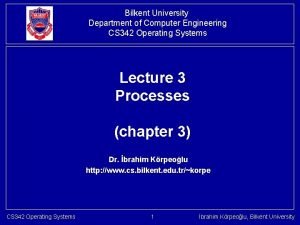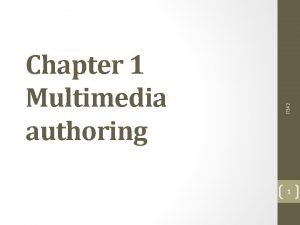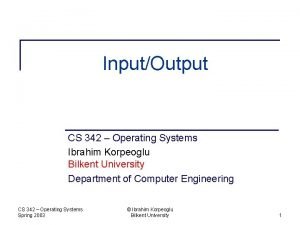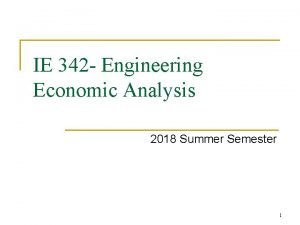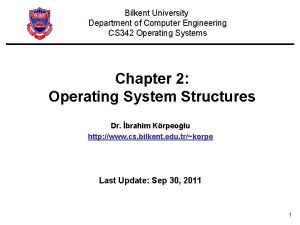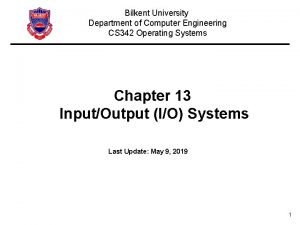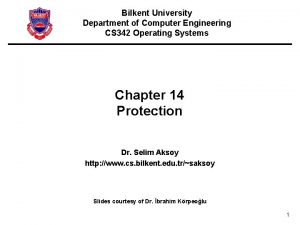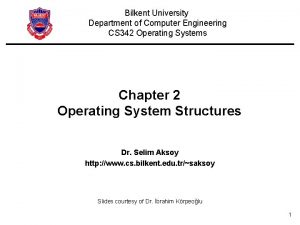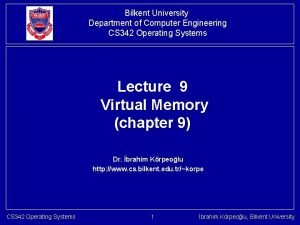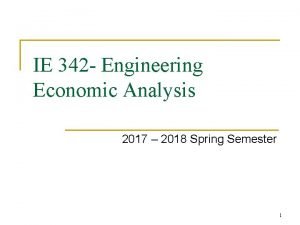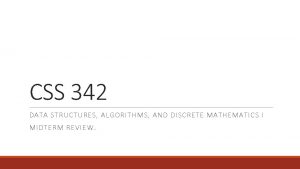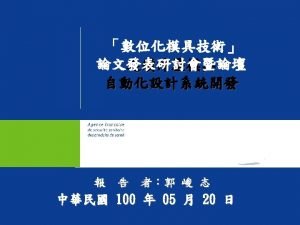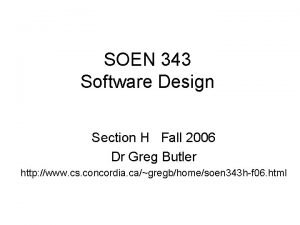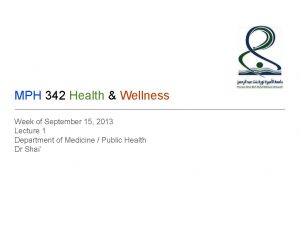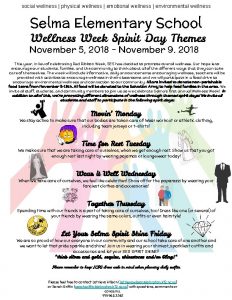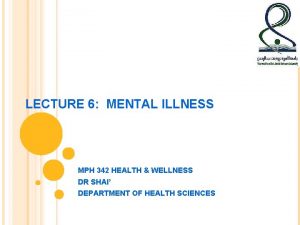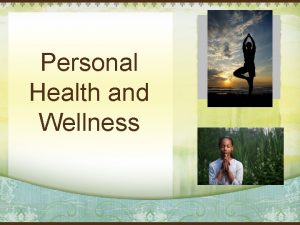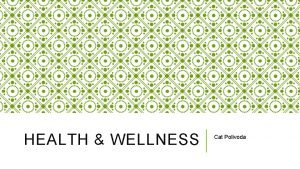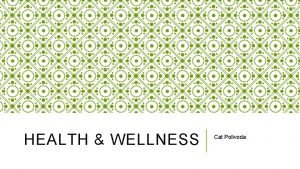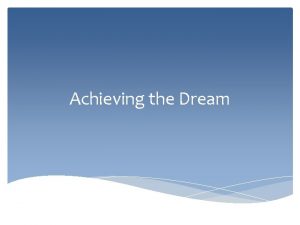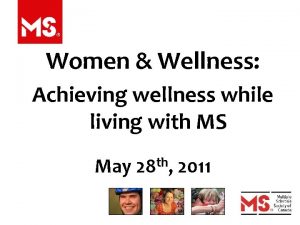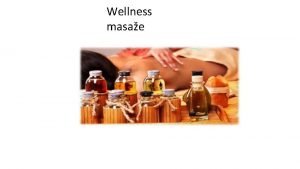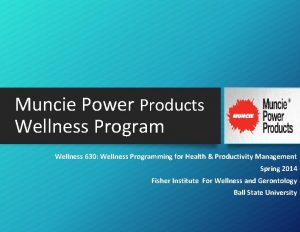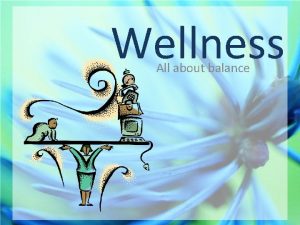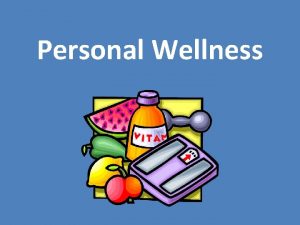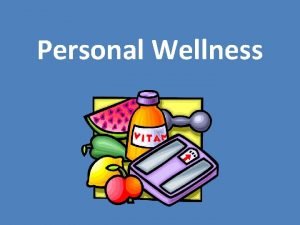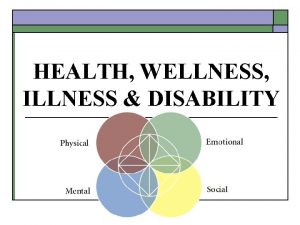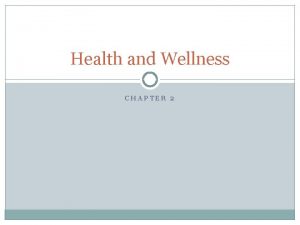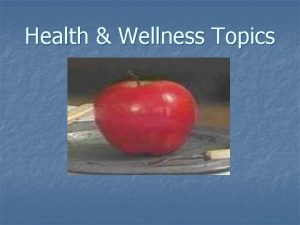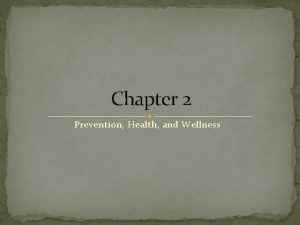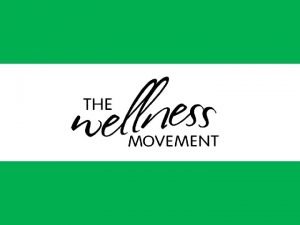Achieving Personal Health MPH 342 Health Wellness Week




































- Slides: 36

Achieving Personal Health MPH 342 Health & Wellness Week of September 23, 2013 Lecture 2 Department of Medicine / Public Health Dr Shai’

objectives WHO definitions of health various models of health dimensions of wellness 3 health behaviours responsible for most death define lifestyle disease health belief model, transtheoretical model, theory of reasoned action model.

what is health? ? absence of disease ? environmental, emotional, spiritual, physical well-being harmony with self, community and environment WHO: ~condition of your body, state of mind ~dynamic process considering all decisions we make

IDEALLY jessie williams (1937): “health is that condition of the individual that makes possible the highest enjoyment of life, the greatest constructive work, and that shows itself in the best service to the world. . . ” Homeostasis: autonomic functions (breathing, heart pumping) automated> the tendency for body systems to interact and maintain constant physiological state

Models of health 1. MEDICAL MODEL health is the absence of 1 or more of 5 D’s: death, disease, discomfort, disability, dissatisfaction health is measured via vital statistics (data on degree of illness ~morbidity and numbers of death ~mortality) incidence: number of new cases of disease during a time period, eg 1000, 12, 000 prevalence: total number of people in community or group with a particular health status health is restored by curing

models of health 2. ENVIRONMENTAL MODEL with ecosystem analysis, this model defines health in terms of quality of person’s adaptation to environment as conditions change. effects of socioeconomic status, education, enviro quality of air, h 20, living conditions, social relationships, health care system

models of health 3. HOLISTIC MODEL defines health in terms of the whole person, physiological, mental, emotional, social, spiritual, environmental aspects optimal health, prevention of disease, positive mental / emotional stats self healing, maintenance of health, , symptoms and sources of disharmony

BMI BODY MASS INDEX: measure of body fat based on height and weight bmi = mass (kg)/ height (m 2) meant to be used as a simple means of classifying sedentary (physically inactive) individuals, with an average body composition. BMI of 18. 5 to 25 may indicate optimal weight, a BMI lower than 18. 5 suggests the person is underweight, a number above 25 may indicate the person is overweight, a number above 30 suggests the person is obese.

CHILDREN BMI calculated the same way BUT BMI that is less than the 5 th percentile is considered underweight and above the 95 th percentile is considered obese for people 20 and under. People under 20 with a BMI between the 85 th and 95 th percentile are considered to be overweight.

6 dimensions of H&W Emotional wellness: understanding emotions & coping with daily life intellectual wellness: mind open to new ideas, new challenges spiritual wellness: state of harmony with self and others occupational wellness: enjoy task and earn living, contribute to society social wellness: perform social roles without harm physical wellness: eating well, exercising, avoiding harmful habits, responsible decisions

lifestyle disease

healthy CHANGES goal health education: provide knowledge to people so they can develop healthful attitudes and skills HEALTH BELIEF MODEL: HBM: perceived susceptibility to adverse condition perceived seriousness (pain, understanding, discomfort) perceived benefits of taking action (choice) barriers to taking action (cost, pain, inconvenience) cues to action: internal or external

transtheoretical model: process of change precontemplation (not yet considering change) contemplation: person aware that change is desirable preparation: committs to change within near date action: implements plan, stop old habits , start new habits, support maintenance: resist relapse termination: not tempted to return to previous behaviour

theory of reasoned action changing a health behaviour begins with an intention to adopt a new behaviour eg stop smoking combo of positive attitude about behaviour + persons thoughts about how others will respond

let’s start researchers at UCLA Berkeley, found behvaiours that contribute to health and longevity: no smoking 7 -8 hrs sleep a night regular exercise ideal BMI no alcohol eat breakfast small b/w meals snacks

what’s normal? heart rate: normal resting heart rate for adults ranges from 60 to 100 beats a minute. a lower heart rate at rest implies more efficient heart function and better cardiovascular fitness. For example, a well-trained athlete might have a normal resting heart rate closer to 40 beats a minute. To measure your heart rate, simply check your pulse. Place your index and third fingers on your neck to the side of your windpipe. To check your pulse at your wrist, place two fingers between the bone and the tendon over your radial artery — which is located on the thumb side of your wrist. When you feel your pulse, count the number of beats in 15 seconds. Multiply this number by 4 to calculate your beats per minute.

normal rr Respiratory rate (also known as ventilation rate, respiration rate, breathing rate, pulmonary ventilation rate, breathing frequency, and respiratory frequency or Rf) = the number of breaths a person takes during one minute. It is usually measured at rest, while sitting. normal respiratory rate for adults is only 12 breaths per minute at rest. Most modern adults breathe much faster (about 15 -20 breaths per minute) than their normal respiratory rate. Respiratory rates in the sick are usually higher, generally about 20 breaths/min or more. This site quotes numerous studies that testify that respiratory rates in terminally sick people with cancer, HIV-AIDS, cystic fibrosis and other conditions is usually over 30 breaths/min.

normal bp Ideally, we should all have a blood pressure below 120 over 80 (120/80). https: //www. youtube. com/watch? v=o. Dd. ELCg. GR JE&feature=player_embedded

video links healthy habits: https: //www. youtube. com/watch? v=BYFoo. E 6 J 1 i. U breaking bad habits: https: //www. youtube. com/watch? v=On. FVFf. AIm. Eg self improvement: https: //www. youtube. com/watch? v=t. USha. G 9 yg. BM for your benefit: https: //www. youtube. com/watch? v=m. PTh 8 OEBw. Eo

homework assignment identify a list of your own healthy habits and unhealthy habits choose from your list of unhealthy habits, and commit to a timeline to improve your lifestyle by avoiding this bad habit , using the techniques you have learned, try to commit to practicing healthier behaviours

mind-body wellness objectives describe 3 ways the mind & body communicate biologically psychosomatic illness placebo effect how faith, spirituality affects health meditation & image visualization

Mind can affect body, positive thought, positive outcome biofeedback: recording device to facilitate learned self control of physiological activities device connected to body region, info on bio activity is “fed back” A/V, with the info, the person can alter an activity eg used in panic attacks, headaches, high BP, back pain


autonomic nervous system mode of Mind-Body communication: auto regulate processes (heart rate, blood pressure, GIT motility. . . ) brain stem & hypothalamus receive info about state of body > in response> activate nerve fibers of ANS to maintain appropriate physiological balance eg exercise> ANS + heart pacemaker cells > inc. blood pumped to moving muscles QUIETING THE ANS: 20 -30 min of quiet time a day

Ans

relaxation response: automatic physiological pattern versus ANS dec. o 2 consumption, resp rate, eg from meditation, muscles relaxation, Harvard MS: repeat the word “one” allows quiet environment, comfortable position, passive mental state, focus

autogenic training: autosuggestion to est. balance, eg in relieving anxiety, autosuggest at meditation time: my arms and legs are heavy, hy heartbeat is calm and regular, my arms and legs are warm, my liungs breathe me, my abdomen is warm, my forehead is cool

hormones: chemical produced by endocrine organs that notify the body of changes that must be responded to fear: SNS> Adrenaline> adrenal cortex > cytokines> affect body systems


psychosomatic illness power of mind to create illness from negative mental states, attitudes (anxiety, depression) no need for pharmaceutical intervention

somatization disorders somatization refers to occurrence of physical symptoms without presence of medical injury psychological and social problems may incite this eg pain, diarrhea, reproductive issues (25 -75% patients at 1 ary care physician)

placebo effect the mind heals, and the mind kills lessening of symptoms or curing of disease by believing in healing powers of sugar pill acts on mind > brings about physiological changes US FDA requires that a new drug undergoes DOUBLE BLIND, PLACEBO CONTROLLED TRIAL

faith and healing across the globe, shamans, religious masters, persons with ability to heal through Divine connection people turn to faith for healing power those attending religious services at least monthly had 30% lower risk of death neurotheology: spiritual experiences and electric brain activity recorded: brains of persons deep in prayer or meditation, see visible MRI structural changes

meditation focussed awareness quiet the mind eg zen meditation: sit, legs crossed, empty mind of chatter transcendental: mantra repeated internally insight meditation: observe the flow of thoughts that pass through mind with detachment

choose a quiet place, sit or lay down comfortably, give yourself 20 minutes to not be disturbed, let your thought flow and then focus on breathing

image visualization “we are what we pretend to be, so we better be careful what we pretend to be. . . ” Kurt Vonnegut healing through visual reenactment during hypnosis mental imagery can reduce pain, emotional responses, improve healing, stopping bad habits image visualization can change body temperature, rr, hormone release, etc athletes: improve performance with SEE the OUTCOME
 Chapter 3 health wellness and health disparities
Chapter 3 health wellness and health disparities Chapter 1 lesson 2 what affects your health
Chapter 1 lesson 2 what affects your health Understanding health and wellness chapter 1
Understanding health and wellness chapter 1 Week by week plans for documenting children's development
Week by week plans for documenting children's development Intentional use of unfriendly or offensive behavior
Intentional use of unfriendly or offensive behavior Chapter 3 achieving mental and emotional health
Chapter 3 achieving mental and emotional health Chapter 3 achieving mental and emotional health
Chapter 3 achieving mental and emotional health Achieving mental and emotional health
Achieving mental and emotional health Chapter 3 achieving mental and emotional health
Chapter 3 achieving mental and emotional health Emotional health defintion
Emotional health defintion Chapter 15 achieving mental and emotional health answer key
Chapter 15 achieving mental and emotional health answer key Chapter 3 achieving mental and emotional health
Chapter 3 achieving mental and emotional health Chapter 3 achieving mental and emotional health
Chapter 3 achieving mental and emotional health Chapter 3 achieving mental and emotional health
Chapter 3 achieving mental and emotional health Chapter 3 achieving mental and emotional health
Chapter 3 achieving mental and emotional health Chapter 15 achieving mental and emotional health
Chapter 15 achieving mental and emotional health Developing a personal wellness plan
Developing a personal wellness plan Personal wellness wheel
Personal wellness wheel 855-342-3645
855-342-3645 Cs342 bilkent
Cs342 bilkent Bilkent scheduler
Bilkent scheduler It 342
It 342 Cs 342 bilkent
Cs 342 bilkent Ie 342
Ie 342 342 en yakın onluğa yuvarlama
342 en yakın onluğa yuvarlama Delta studio valea cascadelor
Delta studio valea cascadelor Cs 342 bilkent
Cs 342 bilkent Cs 342 bilkent
Cs 342 bilkent Cs 342 bilkent
Cs 342 bilkent Cs 342 bilkent
Cs 342 bilkent Cs 342 bilkent
Cs 342 bilkent Ie 342
Ie 342 Jesus é meu amigo meu guia, meu senhor
Jesus é meu amigo meu guia, meu senhor Css 342
Css 342 342 3
342 3 Krs 342
Krs 342 Soen 342
Soen 342





